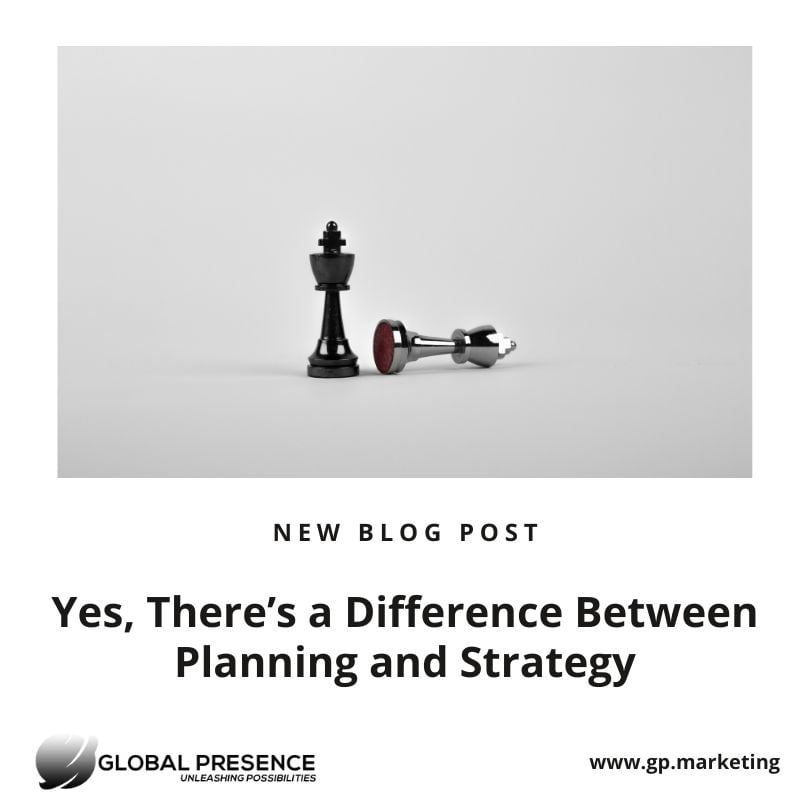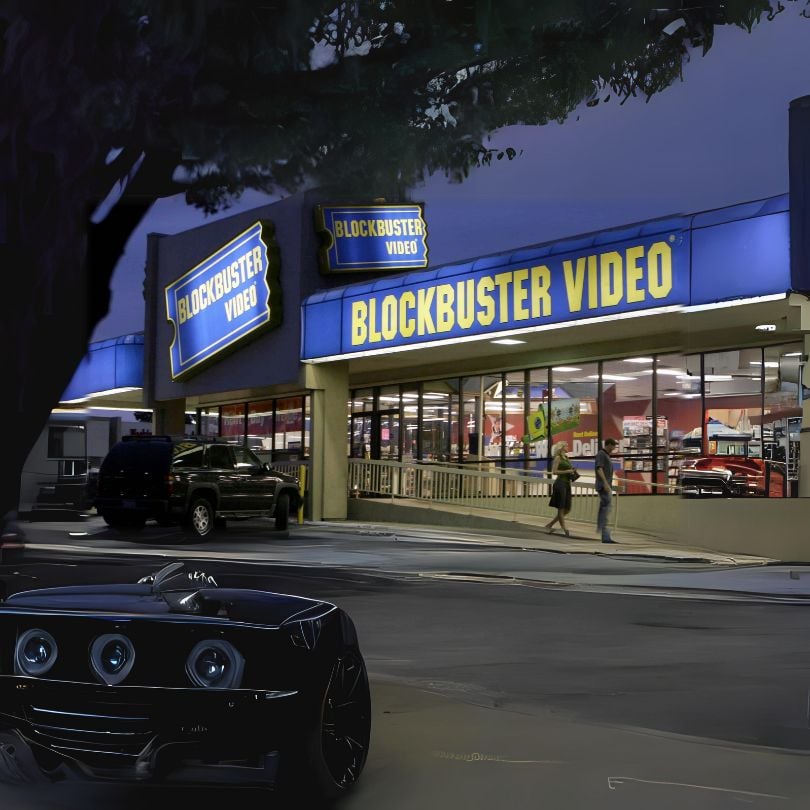
Yes, There’s a Difference Between Planning and Strategy
The terms "planning" and "strategy" often blur, leading many to conflate them into "strategic planning." Yet, this fusion masks a critical misunderstanding, transforming what should be a blueprint for victory into a mere checklist of actions. These actions—be it enhancing customer service or launching new initiatives—may sound strategic, but without a solid strategic foundation, they're unlikely to yield the success they promise. This misalignment not only dilutes the potency of strategic planning but also steers businesses away from achieving their full potential. Let's explore how redefining our approach to strategy and planning can turn this prevalent issue into a blueprint for success.
The Misunderstood Nature of Strategy
Strategy's misunderstood nature often stems from its comparison with simple planning. Unlike planning, which is about resource allocation and control, strategy is the art and science of positioning an organization for competitive advantage. It requires an intricate understanding of the competitive landscape, necessitating choices that are not just about doing things but doing the right things. Strategy demands an integrative approach, considering the entirety of the organization's strengths, weaknesses, opportunities, and threats within its chosen competitive arena. It's about carving out a niche or leveraging capabilities in such a way that the organization can not only compete but excel and win.
Strategic success hinges on the coherence of these choices, ensuring they are aligned with the organization's overarching goals and the realities of the market. This demands a balance between ambition and practicality, innovating within the realm of feasibility. A compelling strategy is actionable, grounded in reality but ambitious enough to push the organization forward. It articulates a clear theory of success, detailing why the organization should compete in a particular arena and how it intends to achieve superiority.

For example, Apple's development of the iPhone showcased a strategic approach that went beyond conventional planning. Instead of merely adding features to existing products, Apple redefined the smartphone market by integrating internet capabilities, a touch screen, and a sleek design, creating a new standard in mobile communication. Similarly, Netflix's shift from DVD rentals to streaming services demonstrated strategic foresight. They anticipated changing consumer preferences and leveraged technology to position themselves as a leader in entertainment, fundamentally changing how content is consumed. These examples highlight how strategic choices, grounded in a deep understanding of market dynamics and consumer behavior, can lead to unparalleled competitive advantage.
Here’s how you can craft an effective business plan.
The Discrepancy Between Planning and Strategy
The discrepancy between planning and strategy is pronounced, with the former often mistaken for the latter. Traditional planning focuses on what resources a company will deploy—such as the number of new products to launch or employees to hire—without necessarily linking these actions to a strategic framework that ensures they contribute to a competitive advantage. This approach might create a false sense of security, as it deals with the controllable aspects of business operations without addressing how these operations interact with unpredictable market forces.
Planning is inherently about control and predictability, dealing with known quantities and attempting to allocate resources efficiently. Strategy, by contrast, embraces the uncertainty of the business environment. It involves making predictions about the future state of the market and positioning the company in a way that it can leverage these predicted changes to its advantage. This requires a nuanced understanding of customer behavior, competitor actions, and the broader industry trends.
Effective strategy goes beyond the allocation of resources to define a unique value proposition that differentiates the company in the eyes of its customers. It's about creating a sustainable competitive advantage that is difficult for competitors to replicate. This involves a delicate balancing act between exploiting existing resources and capabilities and exploring new opportunities for growth and innovation.
Blockbuster versus Netflix presents a clear example of this discrepancy. Blockbuster continued to focus on expanding its physical rental stores, a plan based on the assumption that the DVD rental business would remain stable. Netflix, on the other hand, recognized the potential of online streaming and positioned itself to leverage the shift in consumer preferences towards digital content. This strategic foresight allowed Netflix to disrupt the home entertainment industry fundamentally, demonstrating how understanding broader market trends and innovatively responding to them can create a sustainable competitive edge that's hard for others to replicate.
Read here to learn how you can conduct insightful market research.
So how do you bridge the gap?
Bridging the gap between planning and strategy involves integrating strategic thinking into the planning process. It requires organizations to not only ask "What are we going to do?" but also "Why are we doing this, and how will it help us win?" This strategic lens ensures that all planning activities are aligned with the organization's broader strategic objectives, creating a roadmap not just for growth but for sustainable competitive advantage.
A Case Study of Planning and Strategy with Southwest Airlines
Southwest Airlines serves as a quintessential example of strategy over mere planning. While other airlines were busy optimizing their routes and schedules, Southwest pursued a clear, coherent strategy aimed at becoming a convenient and affordable alternative to bus travel. By adopting a point-to-point routing system, standardizing on a single type of aircraft, and eliminating unnecessary costs such as meals and travel agent bookings, Southwest not only reduced its operational costs but also offered a compelling value proposition to its customers. This strategic focus allowed Southwest to emerge as a formidable competitor in the airline industry, fundamentally changing the game in its favor.

Southwest Airlines' journey from a modest operation to becoming a leader in the American aviation sector is a testament to the power of a well-executed strategy. Unlike the major carriers, who were merely expanding their operations without a clear competitive edge, Southwest focused on a unique value proposition: offering affordable, convenient travel as an alternative to bus transportation. This strategy was built on several key decisions—point-to-point flights, using a single aircraft model for operational efficiency, no-frills service, and leveraging online bookings to reduce costs. These strategic choices enabled Southwest to lower its prices significantly, attracting a broad customer base and securing a substantial market share.
Read more about Southwest’s PR nightmare and how they transformed it with this careful planning and strategy.
The Pitfalls of Traditional Planning
Traditional planning, by focusing primarily on resource allocation and operational tasks, often lacks the depth needed for achieving a competitive edge. This approach tends to emphasize control and predictability over strategic agility, resulting in activities that, although executable, don't synergize to propel a company forward in the competitive landscape. Consequently, businesses might find themselves merely participating in the marketplace instead of leading it. This scenario underscores the need for a more nuanced understanding of strategic planning, one that goes beyond mere operational efficiency to include a forward-looking, competitive strategy.
Adopting a true strategic mindset involves acknowledging and accepting the inherent uncertainties of competing in dynamic markets. Strategy is not about guaranteeing success through controllable actions but about making educated bets based on a coherent theory of how to win. It requires a clear articulation of the logic behind strategic choices, a commitment to monitoring the unfolding market dynamics, and the flexibility to adapt as necessary. Simplifying the strategy to a concise, understandable plan can also facilitate more effective execution and alignment within the organization.
Conclusion
Strategy should be seen as an ongoing journey rather than a one-time plan. By laying out the strategic logic and what must be true for the strategy to succeed, organizations can create a framework for learning and adaptation. This approach allows for continual refinement of the strategy in response to new insights and changing market conditions, keeping the organization on the path to long-term success.
While planning might offer the comfort of predictability, it is only through strategic thinking that organizations can aspire to achieve true competitive advantage. The example of Southwest Airlines demonstrates how a clear, coherent strategy, embraced with the willingness to face uncertainty and make necessary adjustments, can lead to remarkable success. As businesses navigate the complexities of the modern market, embracing strategy over mere planning will be crucial for those aiming to not just participate, but win.
